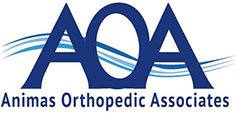Hip Distraction
The hip joint is one of the most important and flexible joints in the human body which allows us to walk, run, bend and perform physical activities. It is a ball (femoral head) and socket joint formed between the hip bone and femur (thigh bone). The hip joint is surrounded by strong muscles and tough ligaments that prevent dislocation of the hip. The hip joint allows a greater range of motion of your body and hence is subjected to wear and tear. If the hip joint breaks or dislocates during an accident or due to old age, it may affect the blood supply to the bone, a condition called avascular necrosis (characterized by loss of blood to the bone). Avascular necrosis is generally treated by hip distraction arthroplasty, a surgical procedure which decreases the pain in the hip joint and increases the ability to perform daily activities.
Indications
Hip distraction is indicated for the treatment of avascular necrosis in adolescents. The hip distraction procedure may be recommended as a conservative surgery for the treatment of arthritis in younger people. The procedure may also be advised for people suffering from femoroacetabular impingements (a condition where the hip bones have an abnormal shape) and Perthes disease (avascular necrosis of the hip in childhood). Hip distraction is also indicated for the treatment of chondrolysis (gradual degradation of hyaline cartilage in the hip joint).
Procedure
The surgery is performed under general or spinal anesthesia or a combination. An incision is made on the side of your leg. The greater trochanter, a thick piece of bone measuring approximately 1.5 cm is cut from the upper part of the femur to access the hip joint. This allows your surgeon to directly view the internal region that is causing pain. The removal of the greater trochanter allows your doctor to safely dislocate the hip while all the muscles attached to the bone are intact. After repairing the abnormality the surgeon may use screws to hold the cut bone together and promote healing. The complete surgery takes about 2-3 hours.
After the Surgery
After the surgery, you will be moved to a recovery room. You will be placed on a special bed with an attached frame to help you move in and out of the bed. The incision will be dressed and ice packs will be applied over your hip to prevent swelling and lessen the post-operative pain. You may have to stay in the hospital for 2-3 nights. You may go home once you are able to walk with the help of crutches, eat and drink normally. Physical therapy may be advised to help you perform less strenuous physical activities on your own.
What are some of the Risks and Complications?
Articulated hip distraction is considerably a safe procedure but as with any surgery, there are risks involved. Some of the risks and complications that may occur include:
- Deep vein thrombosis (DVT)
- Infection
- Hardware complications
- Neurovascular injury
- Avascular necrosis
- Femoral neck fracture










